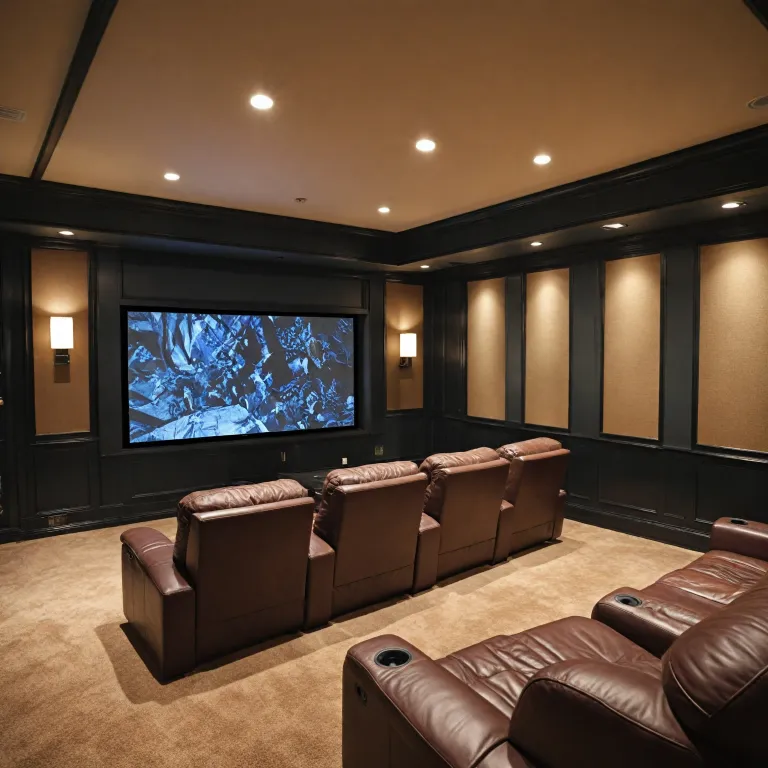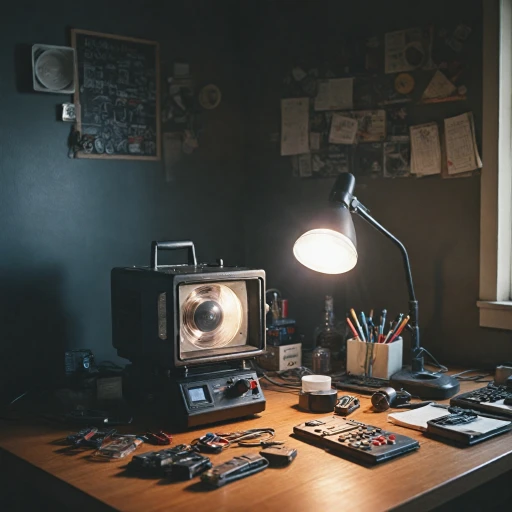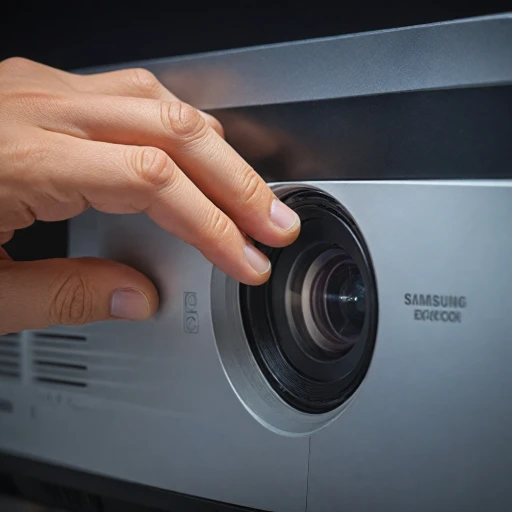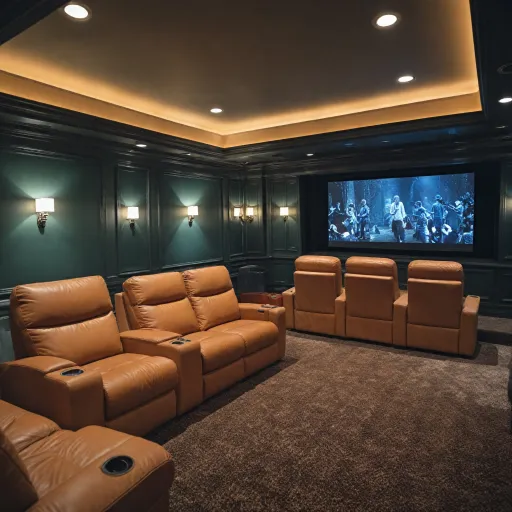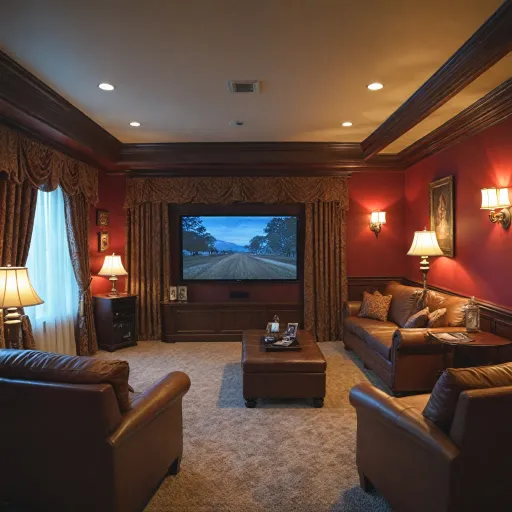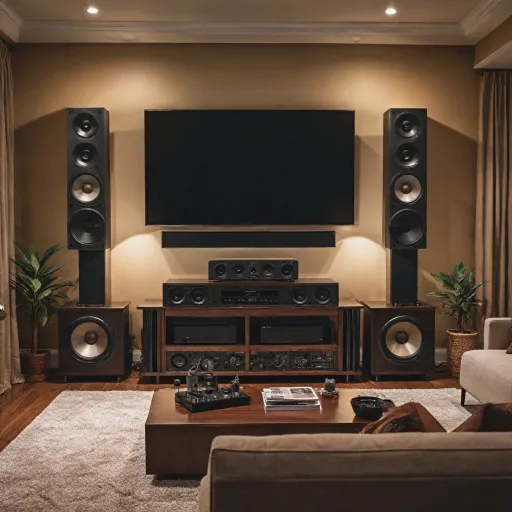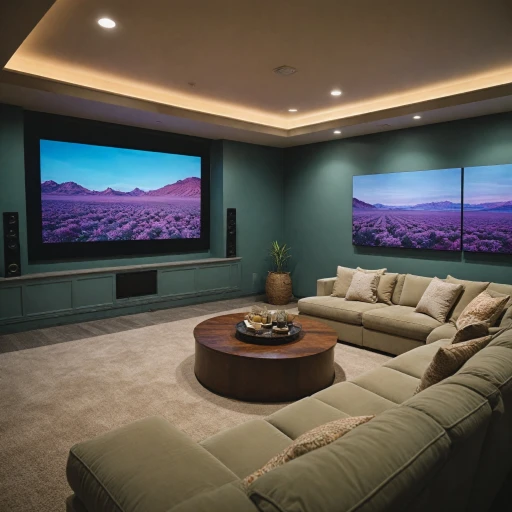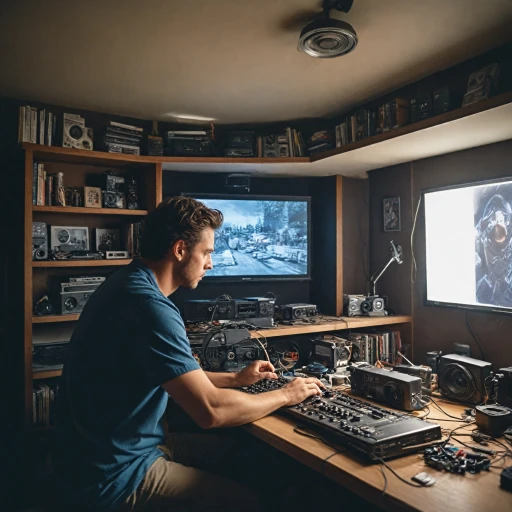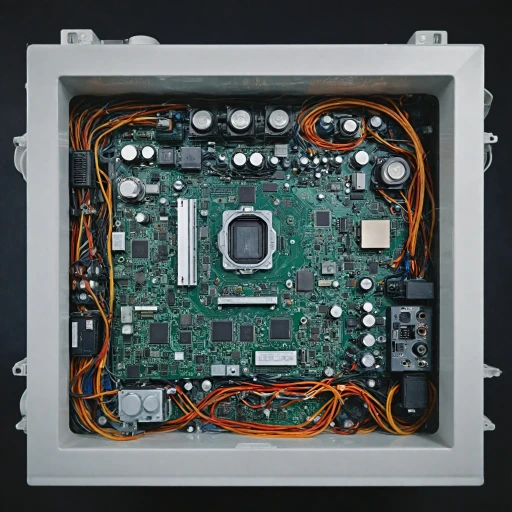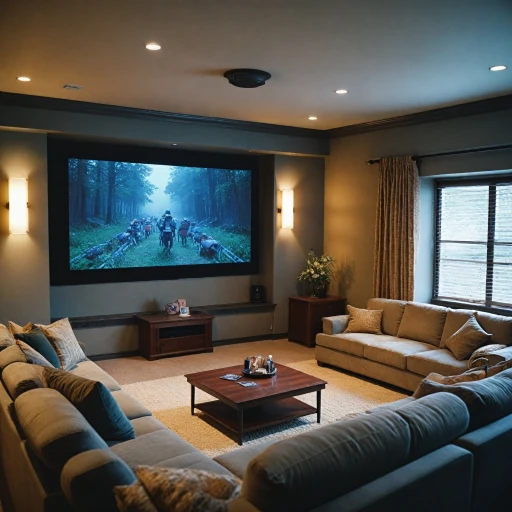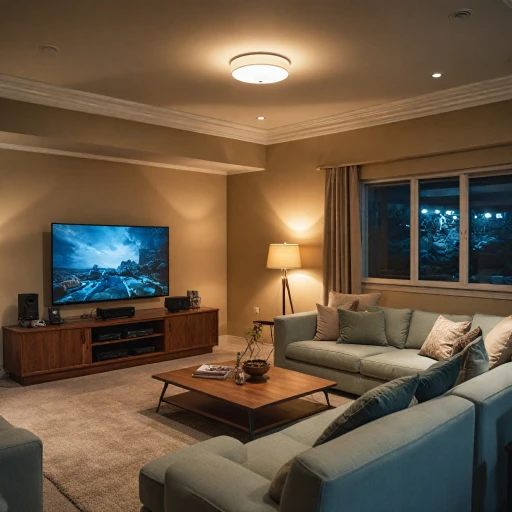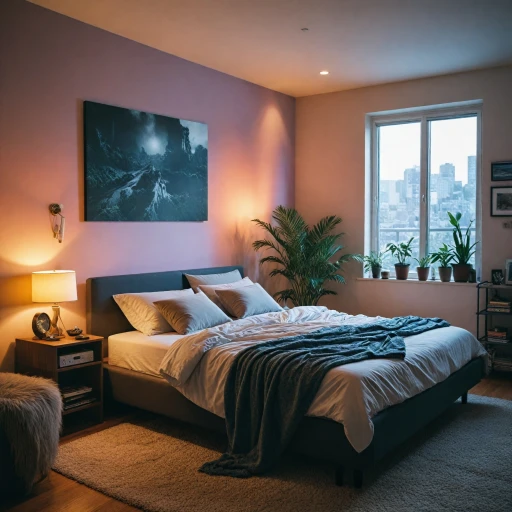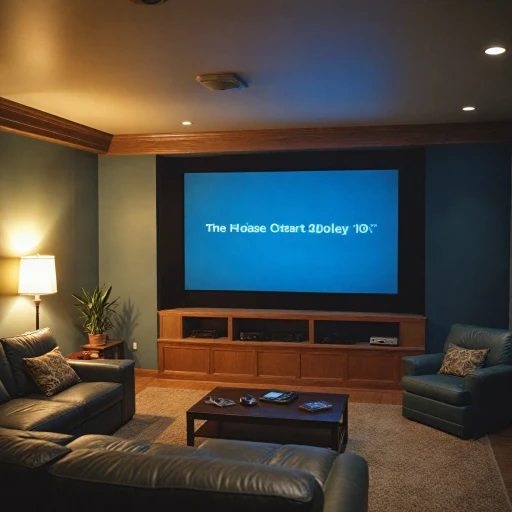
Understanding Room Dimensions
Maximizing Your Room's Potential
When setting up a home theater, understanding your room's dimensions is crucial. The room size will significantly influence your theater layout, affecting everything from the projector placement to the seating arrangement. A well-designed home cinema can transform your space into a personal movie theater, providing an immersive experience.
First, measure the room dimensions to determine the best home theater setup. Consider the length, width, and height of the room. These measurements will guide your decisions on screen size and seating layout. A larger room allows for a bigger screen and more theater seats, while a smaller space might require a more compact design.
Think about the seating arrangement. The number of rows and seats should complement the room size and ensure everyone has a clear view of the screen. Theater seating should be comfortable and strategically placed to optimize the sound system's effectiveness, enhancing the overall cinema room experience.
For those with limited space, consider multi-functional furniture that can double as storage or additional seating. This approach helps maintain a clean and organized theater room without compromising on comfort or style.
Finally, remember that the layout of your home theater will also impact other elements like lighting and ambiance. Proper planning of your room dimensions can help you achieve the best home theater experience, making every movie night feel like a trip to the cinema.
For more tips on optimizing your space, check out this guide on creating the perfect outdoor movie experience.
Choosing the Right Projector
Picking the Perfect Projector for Your Space
Choosing the right projector is crucial for creating an immersive home theater experience. The projector you select will largely depend on your room dimensions and the desired screen size. Here are some key considerations to help you make the best choice:
- Room Size and Layout: The size of your room will dictate the type of projector you need. Larger rooms may require a projector with a higher lumen output to ensure a bright and clear image, even from a distance. Consider the layout of your space and how the projector will fit into your overall theater design.
- Projector Type: There are several types of projectors available, including DLP, LCD, and LED. Each has its own advantages, such as color accuracy or longevity. Assess your priorities, whether it's vibrant colors or a longer lifespan, to determine the best fit for your home cinema.
- Resolution and Image Quality: For a true movie theater experience, opt for a projector that supports at least 1080p resolution. If your budget allows, consider a 4K projector for the ultimate in image clarity and detail.
- Throw Distance: This is the distance between the projector and the screen. Ensure your projector's throw distance is compatible with your room dimensions to achieve the desired screen size without compromising image quality.
- Connectivity and Features: Modern projectors come with a variety of connectivity options, including HDMI, USB, and wireless capabilities. Consider what devices you will connect to your projector and ensure it has the necessary ports and features.
In addition to these factors, managing cables effectively is essential for maintaining a clean and organized theater room. Consider enhancing your home theater by managing cables with floor raceway solutions to keep your setup tidy and efficient.
Screen Size and Placement
Finding the Sweet Spot for Your Projector Screen
Achieving the perfect screen size and placement in your home theater is essential for a genuine cinema experience. When planning your theater layout, it's crucial to consider the dimensions of your room size to ensure that your projection setup is optimal.
First and foremost, the screen must be large enough to create that immersive movie theater feel but not so large that it overwhelms the space. A good rule of thumb is that the viewing distance from theater seats to the screen should be about 1.5 to 2.5 times the diagonal screen size. This ratio helps in achieving the best cinema room experience without causing strain or discomfort.
Moreover, the height at which you mount your screen can affect your home cinema enjoyment. Ideally, the center of the screen should be at eye level for those seated in the front row. If you have multiple rows of seating, you may need to consider theater seating arrangements like raised platforms to maintain a clear line of sight for everyone.
To prevent any impact on the projector image quality, consider the lighting in your room. Light reflections can wash out colors and details on the screen. An optimal home theater design includes a strategy to control the ambient lighting and reduce glare.
By carefully considering these aspects of screen placement and size, you'll set the stage for a home theater experience that rivals the best movie theaters out there. Remember, the layout not only affects the visual experience but also influences your entire home theater sound environment, making it a pivotal component of your overall home design.
Sound System Considerations
Creating an Immersive Soundscape
When designing your home cinema experience, the sound setup plays a crucial role in replicating the best movie theater environment. The arrangement of your sound system can dramatically transform how you perceive films and enhance the cinematic immersion in your theater room.
Consider a surround sound setup, often seen as the gold standard for home theaters. This involves placing speakers strategically throughout the room to envelop viewers in audio, making them feel as though they're at the heart of the action. Typically, a 5.1 or 7.1 channel system is recommended, allowing for a comprehensive sound spread that complements the dimensions of your home theater.
It's vital to position speakers appropriately based on the room layout. Floor-standing or wall-mounted speakers can be placed near the screen, providing robust front audio, while satellite speakers can be positioned around your seating layout for ambient sound. Don’t forget the subwoofer; it’s essential for delivering those deep, cinema-quality bass effects.
Furthermore, the acoustics of your home theater room can impact sound quality. Consider investing in acoustic panels or soundproofing solutions to minimize sound reflection and prevent sound bleed, ensuring that your movie room remains an isolated oasis of audio excellence.
Incorporating these elements into your theater design ensures that your home theater setup transcends the average viewing experience, providing a truly immersive audio-visual journey every time you power on your projector.
Lighting and Ambiance
Creating the Perfect Atmosphere
When designing your home theater, lighting and ambiance play a crucial role in enhancing the overall cinema experience. The right lighting can transform your space, making it feel like a true movie theater. Here are some key considerations to keep in mind:
- Control Natural Light: To achieve the best home cinema experience, it's essential to manage natural light. Consider blackout curtains or shades to prevent any unwanted glare on your screen, ensuring your projector's image remains crisp and clear.
- Layered Lighting: Incorporate a mix of lighting options to suit different moods and activities. Dimmable overhead lights, wall sconces, and LED strips can provide flexibility. This layered approach allows you to adjust the ambiance depending on whether you're watching a movie or simply relaxing in your theater room.
- Accent Lighting: Use accent lighting to highlight specific areas or features in your home theater. For instance, LED strips along the baseboards or behind the screen can add a touch of elegance and guide viewers safely in a darkened room.
- Smart Lighting Systems: Consider integrating smart lighting systems that can be controlled via a remote or smartphone app. This setup offers convenience and allows you to quickly adjust the lighting to match the mood of your movie.
By thoughtfully designing your lighting and ambiance, you can significantly enhance the immersive experience of your home theater. Remember, the goal is to create a comfortable and inviting space that draws you into the world of cinema.
Furniture and Seating Arrangement
Choosing the Ideal Seating Arrangement for Your Home Cinema
When designing the seating layout in your home theater, it's vital to strike a balance between comfort and functionality. Your chosen setup should seamlessly blend with the room dimensions to enhance the overall cinema experience. Consider the following factors when planning your theater seats:- Space and Row Configuration: Determine the best seating arrangement by considering the room size and dimensions. Whether you opt for a single or multiple rows of theater seats, ensure there's enough space for easy movement and access.
- Elevated Seating: For a more authentic movie theater feel, consider adding risers for additional rows. This allows everyone to have an unobstructed view of the screen, especially if you have a larger home theater.
- Reclining Options: Invest in comfortable, reclining theater seating to bring the cinema experience to your home. Adjustable positions help tailor the comfort level to each individual's preference, making long movie nights more enjoyable.
- Distance from Screen: The distance between your seating and the screen should align with the screen size and projector setup. Ensure the first row of seats is at an optimal distance to prevent neck strain.
- Layout Consistency: Maintain a symmetrical seating layout if space permits. This ensures an equitable viewing experience for all seat occupants and creates a cohesive theater design.
